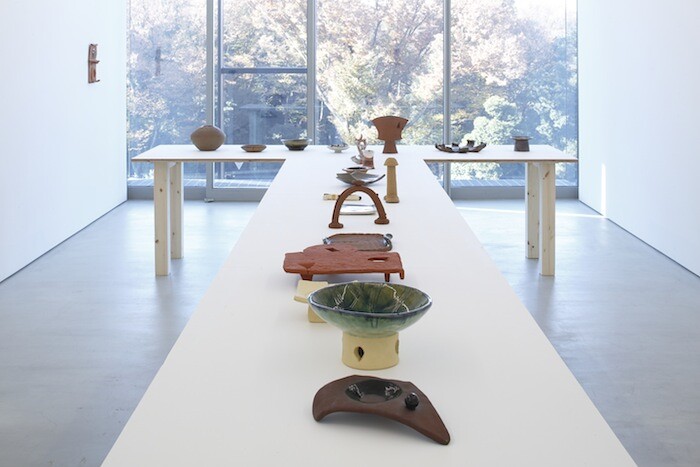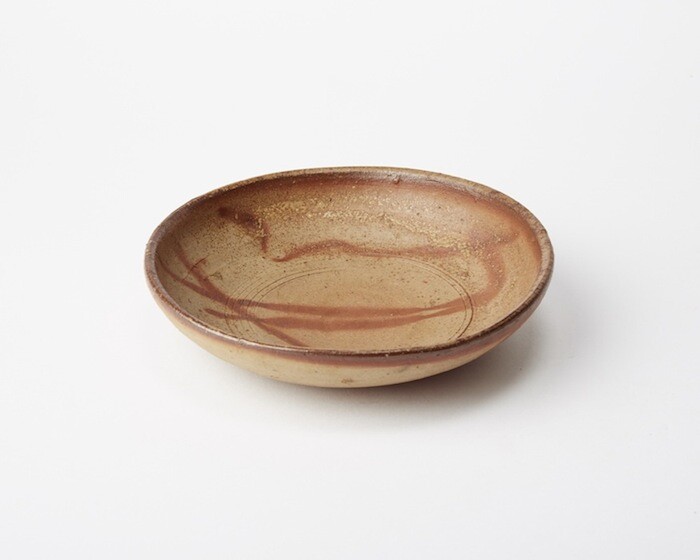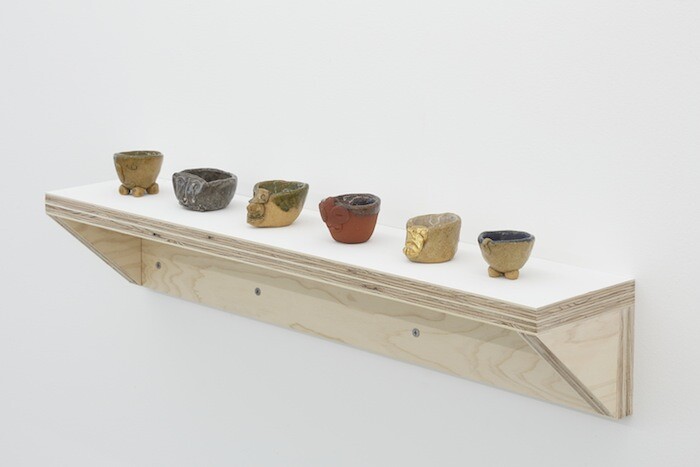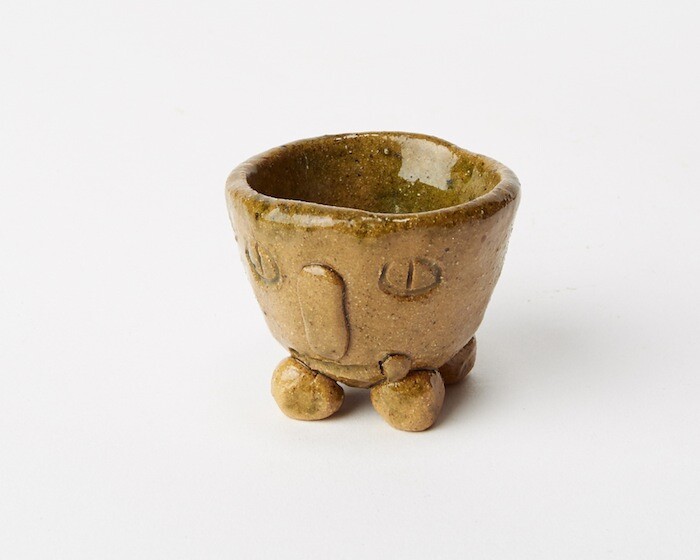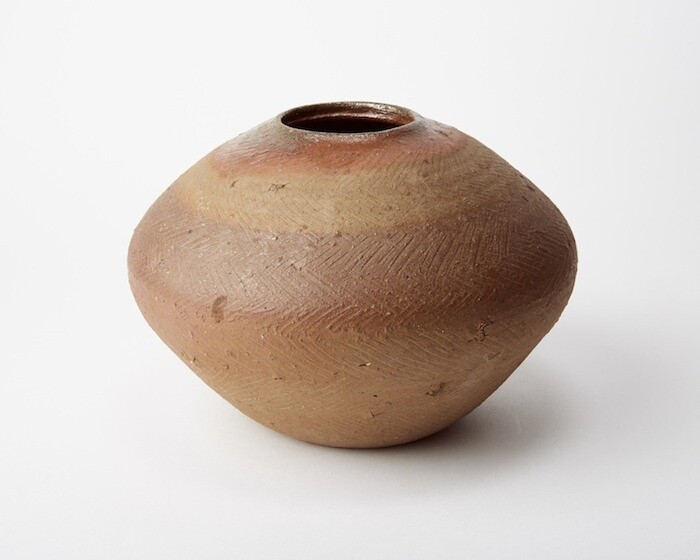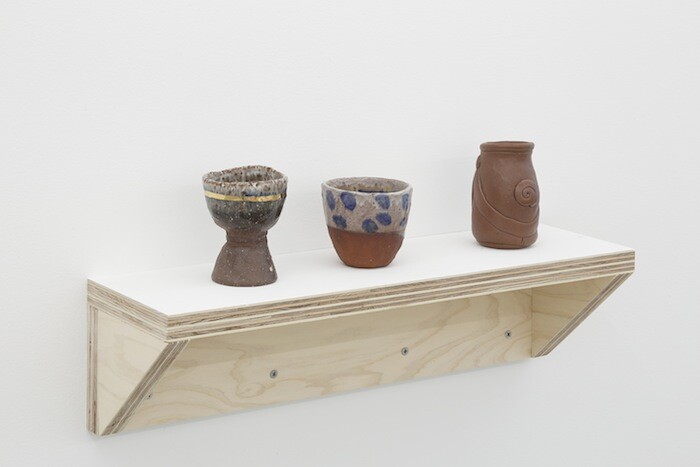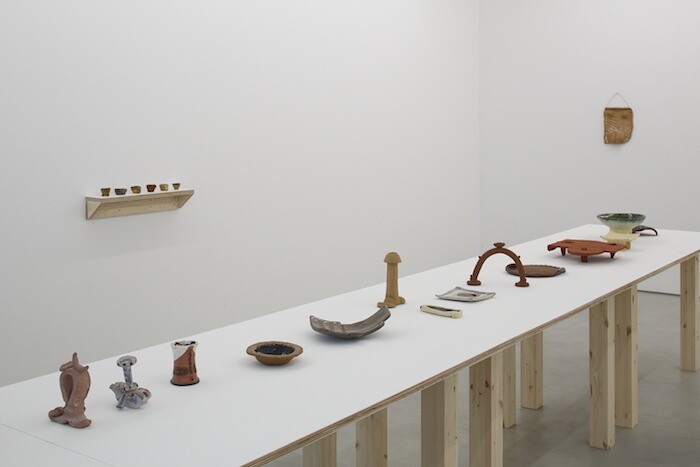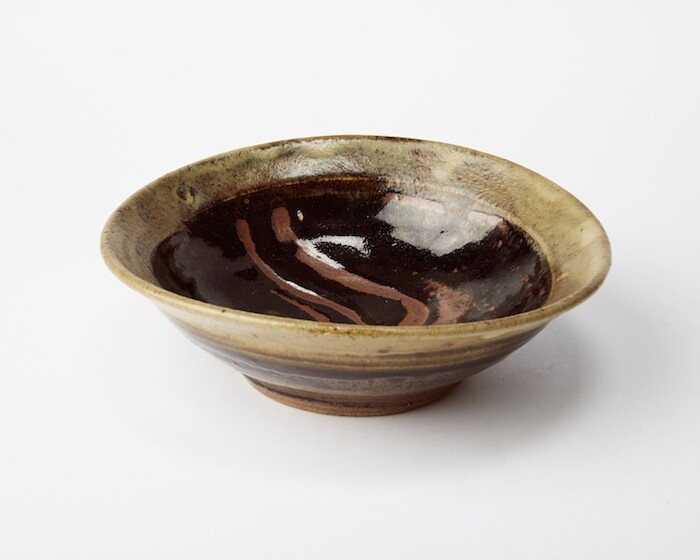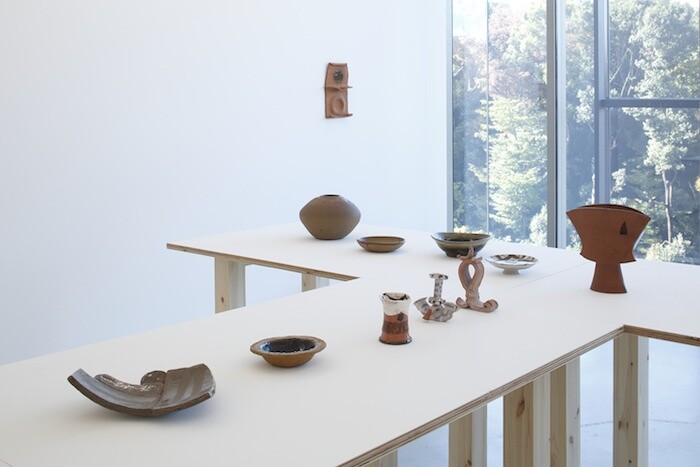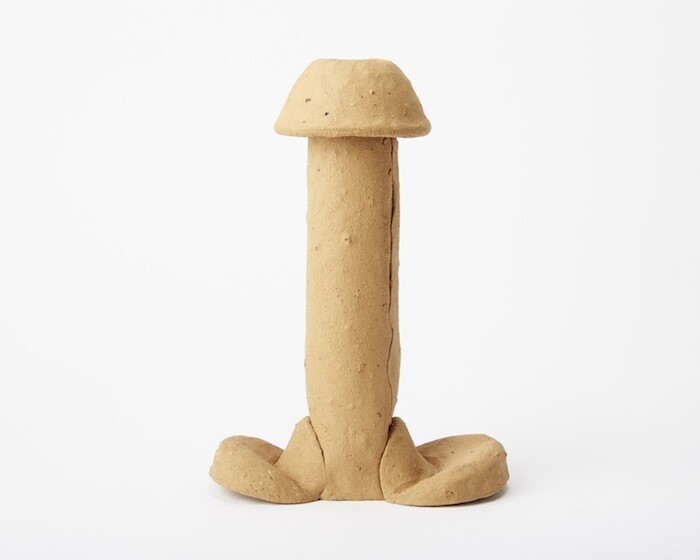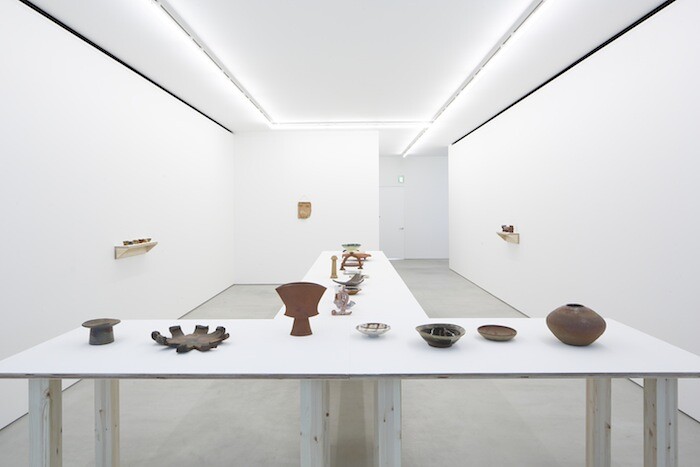Pottery is place, folded and fired. It is soil, stone, flora, topography, and climate, massaged by human tradition and technique. In Japan, the placeness of ceramics has been taken to an extreme with local variations in style proliferating across the island nation. This sensitivity to place and materials echoes in the work of the late Californian craftsman and artist James Blain Blunk (1926–2002), whose pottery is on display for the first time in Japan since the 1950s.
Though best known for the semi-functional redwood sculptures he carved with a chainsaw in the 1960s and ’70s, Blunk was also a painter, weaver, jeweler, woodworker, and, briefly, part-time sheep wrangler in the course of a restless career. But before all this, Blunk was among the first westerners to study under Japan’s master potters. On furlough from the Korean War, to which Blunk had been drafted in 1949, he met the artist Isamu Noguchi by chance in a Mingei (folk art) store in Tokyo, an encounter which would lead him to some of Japan’s most revered craftsmen. When Blunk was discharged from service in 1952 he became an apprentice in Rosanjin Kitaoji’s Kamakura studio, south of Tokyo, before leaving to study for eighteen months under Toyo Kaneshige, the earthenware master creating Bizen pottery in the village of Imbe, Okayama Prefecture. The exhibition at Blum & Poe, Tokyo, taps into that history, presenting more than 30 ceramic works made between the artist’s apprenticeships and the 1990s.
Pieces are arranged in roughly chronological order on waist-high, white wooden tables of the kind that might be used by an apprentice potter for wedging clay. These tables form a “T” shape in the center of the gallery. Hung pieces and other works that don’t fit the rhythm of the ceramics on the tables—including a 1990 series of small mezcal cups with faces—look on from the walls. Together they form an unorthodox array of modernist shapes, raw textures, and splotchy glazes that feels unburdened by tradition. The pieces are wide-ranging in their geographical origin, created between Okayama Prefecture and the home Blunk built in Marin County, Northern California.
This exhibition attempts to expand Blunk’s legacy as a potter and reconnect him with his Japanese past by including four ceramic works by the three potters who most influenced him during his early years: Kaneshige, Rosanjin, and Shoji Hamada. Three of Blunk’s bizen-style works—raw, unglazed, direct and fired at more than 2,500 degrees Celsius—made during the 1950s are included in the show. The most surprising is a sun-like dish with circular colorations from its time in the kiln. Triangular portions have been rapidly cut from the outer edge and the remaining edges have been curled back on themselves. Made with traditional techniques, this and the other early pieces hint at the formal experiments to come.
When Blunk returned to the United States in 1954 he focused his attention on the redwood sculptures, so there is little here from the 1960s and ’70s, just one cup from 1965 and an unusually ornate sculpture and candleholder from 1970. The next cluster of work dates from the 1980s and, rather than moving in a clear trajectory away from his traditional beginnings, Blunk oscillates between modernist abstraction, Mingei, and phallic symbols. Right in the center of the gallery is a small ceramic candleholder in the shape of an erect penis. At this point, Blunk has clearly begun to embrace a more unpredictable ceramic language.
Including more work may have flattened the exhibition’s stylistic variations, but the lack of a formal thread is what makes the pieces resonate—especially when positioned next to the more traditional works of the Japanese potters who influenced Blunk. The show succeeds in revealing shared understandings between the craft of postwar Japan and 1960s California: an appreciation for process and raw materials, and a resistance to “placelessness,” mass-production, and the homogenizing effects of industrialization.
But there are important differences, too: Blunk didn’t engage with tradition or blood-and-soil identity through his pottery in the same way that Kaneshige, Hamada, and Rosanjin did. That might be ascribed to the fact that, for most of his life, he lived in a young nation that struggled with identity and tradition in very different ways to Japan, and worked at a time when America’s cultural norms were being challenged. Blunk allowed himself to be led by his materials, and the results in Blum & Poe are haphazard, full of serendipity and “surprise” (a quality Blunk actively sought). They are the products of modernity and migration, molded by the Californian counterculture of 1960s. His place: Spaceship Earth.

